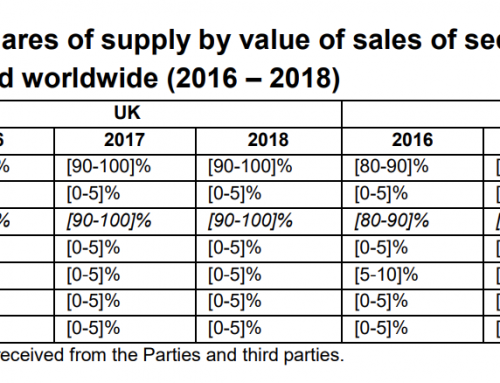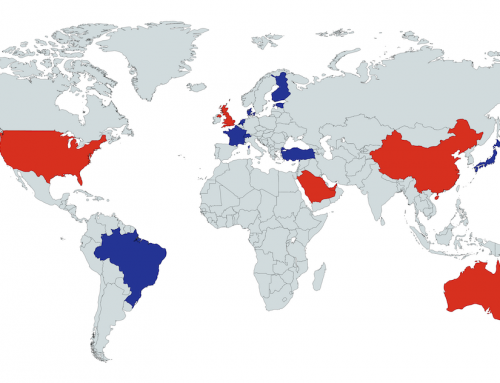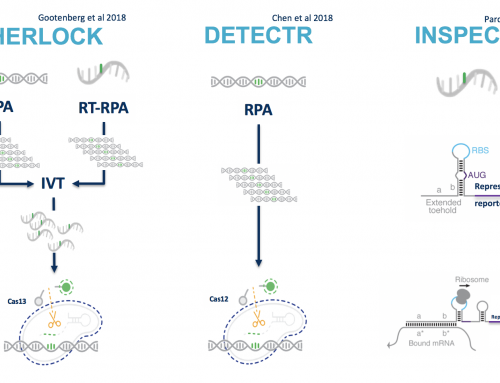Iain Macaulay organised a #singlecell meeting at Norwich’s Earlham Institute earlier this month. The meeting was fun and there were some great presentations during a day of talks and discussion on the development and application of single cell technologies.
100+ #singlecell analysis methods at www.tinyurl.com/mqabyur
One that I really enjoyed was from to extract temporal information from single cells, each of which is assumed to be at a different stage of the temporal biological process, e.g. cell differentiation, being studied.
Keiran presented his approach that uses marker genes to determine pseudotime, see: Ouija: Incorporating prior knowledge in single-cell trajectory learning using Bayesian nonlinear factor analysis on BioRxiv.
During his talk Kieran pointed to this site which has a list of scRNA-sSeq methods (he gave a link to the GoogleDoc but I did not catch who put it together – please let me know so I can credit the right person). There are currently 102 methods described in the table.
Here’s a few of the tools I thought were most interesting on the list:
- BASIC is a tool for semi-de novo assembly of full-length BCR in single B cells from scRNA-seq data
- BRIE is a tool for estimating isoform proportions from RNA-seq data – which might not be necessary if ONT’s direct RNA-Seq works in single cells.
- demuxlet is Jimmie Yie’s (titter handle) method for sample demultiplexing of droplet sc-RNAseq reads using SNP fingerprints (see this post written after Jimmie’s #AGBT17 talk).
- GiniClust is tool for detecting rare cell-types from single-cell gene expression data (I hope it implements some of the QC’s described in the index-swapping paper.
- Scater places an emphasis on tools for quality control, visualisation and pre-processing of data before further downstream analysis, filling a useful niche between raw RNA-sequencing count or transcripts-per-million data and more focused downstream modelling tools such as monocle, scLVM, SCDE, edgeR, limma and so on.
- scphaser is an R package for haplotype phasing using single-cell RNA-seq data.
- UMI-tools is a suite of tools for dealing with Unique Molecular Identifiers (UMIs).
Single-cell methods tried and tested
Lia Chappell, a post doc in Thierry Viogt’s group at the Sanger Institute, gave an overview of her group work on testing and developing methods to sequence 1000s of cells – cheaply!
- 10XGenomics: a black box that can deliver 10,000s of cells but no hacking/tinkering and at a cost of £1200 per sample. Has high-cell capture efficiency, and is very robust. 3’mRNA-Seq.
- Drop-Seq: eminently hackable and cheap. Has very low-cell capture efficiency, and requires dedicated staff and facilities to make it work. 3’mRNA-Seq.
- Seq-Well: a microwell based Drop-Seq (published in Nature methods). Beads and cells drop into microwells on the surface of a slide. A membrane allows buffer/reagent exchange but keeps the mRNA in well (attached to beads). Lia said it looks at least as good as Drop-Seq!
Which should you use? My lab is using the 10X Genomics for single-cell (and a few phased genomes). As a core lab director I really like the robustness of the system, we’ve had about a 5% failure rate (which is about as good as it gets), and are now processing larger projects of 24 samples at a time. The costs are high, but most of my users want data and answers. They do not want to spend lots of time troubleshooting a flakier method. The costs of 10X Genomics single-cell prep are likely to come down over time: the box is pretty simple, the chips are plastic and the RT reagents are probably the same as you’re using already – only the Gel Beads are truly proprietary and I’ve no idea of the real manufacturing and QC costs of these.
Both Drop-Seq and Seq-Well will possibly be less efficient because RT primers are attached to beads, rather than 10X’s in-solution method. This probably limits the rate at which RNA and primer can meet for RT, although I’ve not tested this empirically.
I want 10X Genomics to open up their technology to users so we can hack the molecular biology. I’m sure many people would be willing to pay for Gel Bead dev kits, although manufacturing bespoke gel-bead oligos is likely to be expensive. There are lots of benefits with hackable systems. The Illumina sequencing technology won partly because the library prep methods were easy for users to modify leading to the 400+ methods today, and to single-cell sequencing!
10X are working on lots of new assays e.g. the most recently released TCR kit. BCR is most likely coming. But what’s next: CNV, miRNA, TotalRNA-Seq…who knows?
Hacking Seq-Well
I’ll finish up this post with some thoughts about Seq-Well. It’s a great method and when I first read the paper I immediately thought “wouldn’t it be nice if Seq-Well work on Illumina bead-chip arrays?”
Beadchips have millions of wells each with an oligo-coated bead. The really clever bit was that Illumina developed a method to allow decoding of beads after randomly loading the chips. A sequential hyb of a barcode allowed users to know where each specific genotyping or gene expression oligo was.
If Seq-Well could be performed on similar arrays then decoded oligo-beadchips could be scanned to detect which bead had cells co-located, and with the right scanning technology phenotyping might be possible too. Single-cell QC would probably be improved too as it would be possible to assess how much molecular recombination is going on in the downstream pooled molecular biology and sequencing. Because users would know which beads had cells present, all the other beads should generate zero signal, analysis of the distribution of this background would improve biological analysis and interpretation.








Leave A Comment